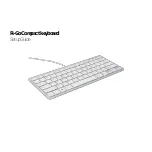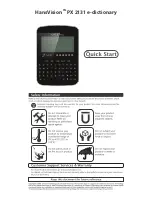
Sampling P0: Recording 0–1: Recording
571
R-Mono:
The R channel of the
Source Bus
will be
sampled in mono.
Stereo:
The L and R channels of the
Source Bus
will be
sampled in stereo, creating a stereo multisample.
Example 1)
Sampling a mono source connected to
AUDIO INPUT 1 without applying internal effects
If using the Audio Input:
Source Bus:
Audio Input 1/2 (0–8c)
Resample:
Manual (0–8c)
Recording Level [dB]:
as desired (0–1c)
Mode:
L-Mono (0–1d)
(
→
see diagram in 0–8c: Source Bus = Audio Input 1/2)
If using the L/R Bus:
Input1
Bus Select (IFX/Indiv.):
L/R (0–8a)
Input1
Pan:
L000 (0–8a)
Input1
Level:
127 (0–8a)
Source Bus:
L/R (0–8c)
Resample:
Manual (0–8c)
Recording Level [dB]:
as desired (0–1c)
Mode:
L–Mono (0–1d)
(
→
see diagram in 0–8c: Source Bus = L/R)
Example 2)
Applying the internal insert effect IFX1
101: Reverb Hall to a mono source connected to
AUDIO INPUT 1, and sampling in stereo
Input1
Bus Select (IFX/Indiv.):
IFX1 (0–8a)
Input1
Pan:
C064 (0–8a)
Input1
Level:
127 (0–8a)
Source Bus:
L/R (0–8c)
Resample:
Manual (0–8c)
IFX1: select 101: Reverb Hall (P8)
Recording Level [dB]:
as desired (0–1c)
Mode:
Stereo (0–1d)
(
→
see diagram in 0–8c: Source Bus = L/R)
Example 3)
Sampling a stereo source connected to
AUDIO INPUT 1 and 2 without applying internal
effects
If using the Audio Input:
Source Bus:
Audio Input1/2 (0–8c)
Resample:
Manual (0–8c)
Recording Level [dB]:
as desired (0–1c)
Mode:
Stereo (0–1d)
(
→
see diagram in 0–8c: Source Bus = Audio Input1/2)
If using the L/R Bus:
Input1
Bus Select (IFX/Indiv.):
L/R (0–8a)
Input1
Pan:
L000 (0–8a)
Input1
Level:
127(0–8a)
Input2
Bus Select (IFX/Indiv.):
L/R (0–8a)
Input2
Pan:
R127 (0–8a)
Input2
Level:
127 (0–8a)
Source Bus:
L/R (0–8c)
Resample:
Manual (0–8c)
Recording Level [dB]:
as desired (0–1c)
Mode:
Stereo (0–1d)
(
→
see diagram in 0–8c: Source Bus = L/R)
Example 4)
Applying the internal insert effect IFX1
012: St.Graphic 7EQ to a stereo source connected to
AUDIO INPUT 1 and 2, and sampling in stereo
Input1
Bus Select (IFX/Indiv.):
IFX1 (0–8a)
Input1
Pan:
L000 (0–8a)
Input1
Level:
127 (0–8a)
Input2
Bus Select (IFX/Indiv.):
IFX1 (0–8a)
Input2
Pan:
R127 (0–8a)
Input2
Level:
127 (0–8a)
Source Bus:
L/R (0–8c)
Resample:
Manual (0–8c)
IFX1: select 012: St.Graphic 7EQ (P8)
Recording Level [dB]:
as desired (0–1c)
Mode:
Stereo (0–1d)
(
→
see diagram in 0–8c: Source Bus = L/R)
Example 5)
Sampling a digital source connected to S/P
DIF without applying internal effects
Source Bus:
S/P DIF L/R (0–8c)
Resample:
Manual (0–8c)
Recording Level [dB]:
as desired (0–1c)
Mode:
Stereo (0–1d)
(
→
see diagram in 0–8c: Source Bus = S/P DIF L/R)
Note:
By setting the “0–8a: Input” S/P DIF L and R
parameters appropriately, the above-listed example
settings for sampling an analog source connected to
AUDIO INPUT 1 and 2 can instead be used for
sampling a digital source connected to S/P DIF IN.
Note:
For details on settings for performing
resampling, see “Resample” on page 577.
Sample Time
[min sec]
Specifies the amount of time that you wish to sample.
This can be set in 0.001 second increments.
Immediately after the power is turned on, this
parameter indicates amount of remaining RAM
memory in the selected memory bank (the available
sampling time). If you record a sample in this
condition ([REC]
→
[START]
→
[STOP]), the change in
time will be displayed automatically.
If the writing-destination (“Save to”) is DISK, the
maximum value is calculated from the amount of
remaining space on the disk specified by “Select
Directory.”
Tips:
If you have sufficient RAM memory, it is a good
idea to set an ample “Sample Time,” and to use the
“Truncate (for Sample Edit),” “Truncate (for Loop
Edit)” page menu command after you sample to delete
unwanted portions of the sample and reduce it to the
minimum size necessary. You can also press the
SAMPLING START/STOP switch to manually stop
sampling after you have recorded the desired material.
If the writing-destination (“Save to”) is RAM, and
you continue sampling with the “Auto Optimize
RAM” (Global 0–1d) option unchecked, wasted
space will develop in memory, decreasing the
amount of available RAM memory. In this case,
execute “Optimize RAM” on page 620 to recover
the wasted space.
Note: “
Free Sample Memory/Locations” (0–1f) lets you
check the remaining amount of RAM.
The remaining amount of memory will depend on the
following conditions:
• The amount of memory that is installed.
• The size of any installed EXs samples.
Summary of Contents for Electronic Keyboard
Page 1: ...Parameter Guide Parameter Guide ...
Page 2: ......
Page 180: ...Program mode EXi 170 ...
Page 290: ...EXi STR 1 Plucked String 280 ...
Page 572: ...Sequencer mode 562 ...
Page 700: ...Global mode 690 ...
Page 751: ...Insert Effects IFX1 IFX12 Routing 741 Fig 2 3a Fig 2 3b ...
Page 902: ...Effect Guide 892 ...
















































